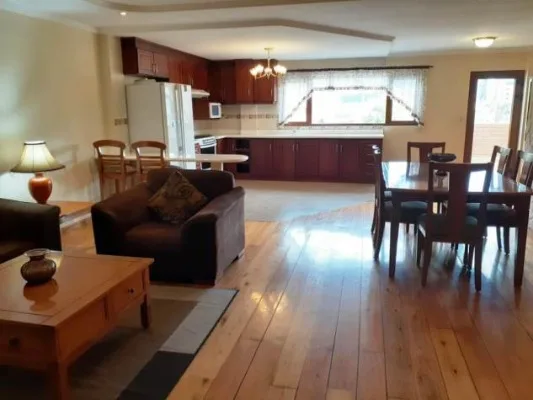‘Designer drugs’ are the latest fad in Latin America and they’re not just for export
Last June, Alejandro Arboleda Uribe was awakened from an afternoon nap by police kicking in the door of his apartment in the posh El Pablado district of Medellín. The 32-year-old drug kingpin probably assumed the protection of Mexican cartels and renaissance elements of the old Medellín cartel inoculated him from this kind of raid. Not so.

Police destroy a Colombian drug lab.
Capping years of investigation, Interpol and the Colombian police nailed him and 13 others in his organization and seized their stash, but it wasn’t cocaine. Uribe peddled synthetic drugs: ecstasy, MDMA, acid and his own recipe for a new favorite among Colombia’s youth – a pink powder called 2C-B.
The cartels are rethinking the South American market. And they’re here not only to buy, but to sell.
Places like Colombia, Central America and Brazil are usually thought of as producers and conduits — not consumers. That’s changing. Criminal groups across the region are tapping into Latin America’s growing demand for “new psychoactive substances” — a catchall class of drugs like the ones found in Uribe’s apartment.
Colombia and Brazil especially are turning into import hubs. Seizures of ecstasy in Colombia increased seventeenfold from 2010 to 2015, according to the International Narcotics Control Board. In Brazil, seizures of ecstasy-like substances increased 379 percent in 2014 alone. “About 10 to 15 years ago, a lot of countries in Latin America said that they produced and acted as corridors for drugs but didn’t consume,” says Bo Mathiasen, the chief of the United Nations Office on Drugs and Crime in Colombia. “Today, there isn’t even one country that’s not reporting drug use.”
It’s not as though consumers are looking for a bargain. On one Bogotá-based dealer’s menu, a single ecstasy pill runs from $7 to $14. A hit of 2C-B (2,5-dimethoxy-4-bromophenethylamine), a psychedelic pink cocaine, sells for about $50. A gram of pure MDMA? About the same price tag. Compare that to cocaine, which you can get on the streets of Bogotá for $5 per gram — 10 times cheaper.
So, why are club-loving Latin Americans splurging on these pricey substances instead of cocaine? According to Julián Wilches, a researcher with Bogotá-based think tank Fundación Ideas para la Paz, an emerging middle class between the ages of 16 and 30 has more discretionary income than previous generations of that demographic. In addition, traffickers are pushing designer drugs as a way to launder cocaine revenues made elsewhere back to Latin American dealers, who get part of their payment in cash and another part in pills and powders to sling.
Then there’s the bad cultural vibe of cocaine. Designer drugs generally are associated with la rumba, fun and the good life, unlike cocaine, which has a rap for being the stuff of violent gangs — and it definitely is. “Cocaine has a stigma attached to it,” says Ra Ra, a 27-year-old Latin American professional who lived and partied for the better part of her 20s in Buenos Aires before moving back to her home city, Bogotá. (She asked that her real name not be used.) “Sure enough, when you go abroad and say you’re Colombian, people think Pablo Escobar, drug trafficking — people stereotype you.”
“Drugs like ecstasy, MDMA and acid aren’t associated with those stereotypes,” says 28-year-old Disco, another Colombian who has partied in Bogotá and Buenos Aires and prefers designer drugs to cocaine. “Cocaine is frowned upon here.” La La, a 24-year-old Colombian who remembers seeing coked-up, armed paramilitaries riding around her town on motorcycles, tells OZY that she doesn’t think of ecstasy and LSD as “violent drugs,” whereas cocaine reminds her of “armed conflict.” (Disco and La La asked that their real names not be used as well.)
Synthetics are just as tied into the transnational drug scene as cocaine, but production and routes are different. Recipes for synthetics usually are designed in Europe and then sent to India and China, where industrial chemicals serving as precursors are easy to come by. Batches heading for Latin America are made there or, increasingly, in Mexican labs. A lot of precursor chemicals have been showing up in Central America, a haven for drug traffickers linking South American producers with Mexican and U.S. affiliates.
In some recent cases, precursors appear to be imported directly, and cooks brew up modified batches based on their own special recipe, as in the case of Uribe’s pink cocaine.
If the trend continues to grow, money from synthetics could strengthen existing criminal networks. Violent armed groups like Clan del Golfo and Los Rastrojos in Colombia have strong holds over drug-trafficking routes. In Brazil, Red Command and First Capital Command are notorious traffickers. There’s no doubt: Buying designer drugs finances crime.
Yet, when it comes to health, there may not be as much cause for alarm. Studies show that MDMA-based substances and LSD do not generate dependence when pure, according to a chemist and Colombian government health official who asked for anonymity. He believes cocaine is much more addictive and damaging to users’ health. “There’s a resurgence of ecstasy happening right now,” the chemist tells OZY. About 10 years ago, he says, 75 percent of ecstasy on the Bogotá market was false. In a big musical festival this year in Bogotá, the chemist says, 90 percent of ecstasy pills were authentic. (Echele Cabeza, a Colombia-based NGO, did the testing.)
So we know Latin America’s love for synthetics is real. But in February, anti-narcotics agents with the Colombian police found a shipment of pink cocaine worth $50,000 en route from Bogotá to Miami — an export. That seizure raises the question of whether the underground networks that control this trade are in Latin America for the consumer market only … or if they’re also here to cook.
__________________
Credit: OZY Fest, www.ozy.com






















